Antibacterial drugs
Article content:
1. List of popular antibiotics2. Beta-lactam antibiotics
3. Aminoglycosides
4. The quinolones and fluoroquinolones (PC)
5. Polymyxin
6. Antibacterial macrolides
7. Nitroxoline
8. Glycopeptides
9. Nitroimidazoles
10. Preparations of different groups: mupirocin, fosfomycin
Below we give you a list of the main antibacterial drugs with a description of their action and application. All these drugs you can easily buy online when you click on the "More Info" link.
Doxycycline
 Doxycycline is used for treating infections caused by certain bacteria. It may be used in combination with other medicines to treat certain amoeba infections. Infectious-inflammatory diseases caused by microorganisms sensitive to doxycycline, incl. infection of the respiratory organs and ENT organs; infections of the digestive tract; suppurative infections of the skin and soft tissues (including acne); infections of the urogenital system (including gonorrhea, primary and secondary syphilis); typhus, brucellosis, rickettsiosis, osteomyelitis, trachoma, chlamydia. More About Doxycycline >
Doxycycline is used for treating infections caused by certain bacteria. It may be used in combination with other medicines to treat certain amoeba infections. Infectious-inflammatory diseases caused by microorganisms sensitive to doxycycline, incl. infection of the respiratory organs and ENT organs; infections of the digestive tract; suppurative infections of the skin and soft tissues (including acne); infections of the urogenital system (including gonorrhea, primary and secondary syphilis); typhus, brucellosis, rickettsiosis, osteomyelitis, trachoma, chlamydia. More About Doxycycline >
Zithromax
Active Ingredient: Azithromycin
 The drug Zithromax is intended exclusively against bacteria, but not against viral infections. Zithromax shows high efficiency in the treatment of staphylococci, streptococci and pneumococci, as well as intestinal and hemophilic rods, enterococci, salmonella and shigella. In addition, it can successfully combat mycoplasmas, lagionella and bacteroids. The bactericidal action of Zithromax appears when it is used in high concentrations. This medicine is also effective in the treatment of sexually transmitted diseases, successfully fighting the bacteria that cause them, such as gonococci, trichomonads, chlamydia and spirochetes. Other diseases caused by bacteria that are sensitive to the drug Zithromax, can also be cured with it. Such diseases include: angina, bronchitis, otitis media, pneumonia, scarlet fever, infected dermatitis, erysipelas, urethritis and other infectious diseases caused by bacteria. More About Zithromax >
The drug Zithromax is intended exclusively against bacteria, but not against viral infections. Zithromax shows high efficiency in the treatment of staphylococci, streptococci and pneumococci, as well as intestinal and hemophilic rods, enterococci, salmonella and shigella. In addition, it can successfully combat mycoplasmas, lagionella and bacteroids. The bactericidal action of Zithromax appears when it is used in high concentrations. This medicine is also effective in the treatment of sexually transmitted diseases, successfully fighting the bacteria that cause them, such as gonococci, trichomonads, chlamydia and spirochetes. Other diseases caused by bacteria that are sensitive to the drug Zithromax, can also be cured with it. Such diseases include: angina, bronchitis, otitis media, pneumonia, scarlet fever, infected dermatitis, erysipelas, urethritis and other infectious diseases caused by bacteria. More About Zithromax >
Cipro
Active Ingredient: Ciprofloxacin
 Ciprofloxacin is a drug of a wide range of uses aimed at combating a multitude of various pathogens of infectious diseases, it acts bactericidal. This drug is prescribed for the occurrence of infections of the respiratory tract, bones and joints, soft tissues and skin, gastrointestinal tract, as well as infections caused by salmonella, shigella; with meningitis, postoperative and gonococcal infections, sepsis and other purulent and inflammatory processes. The drug is prescribed for infections of the genitourinary system, the drug has a good effect due to rapid penetration into the kidneys and prolonged excretion. The drug is used to treat infectious diseases in cancer patients.
Ciprofloxacin is a drug of a wide range of uses aimed at combating a multitude of various pathogens of infectious diseases, it acts bactericidal. This drug is prescribed for the occurrence of infections of the respiratory tract, bones and joints, soft tissues and skin, gastrointestinal tract, as well as infections caused by salmonella, shigella; with meningitis, postoperative and gonococcal infections, sepsis and other purulent and inflammatory processes. The drug is prescribed for infections of the genitourinary system, the drug has a good effect due to rapid penetration into the kidneys and prolonged excretion. The drug is used to treat infectious diseases in cancer patients.
Amoxil
Active Ingredient: Amoxicillin
 Amoxicillin is a semi-synthetic penicillin with a broad spectrum of action. The drug is indicated for the treatment of infections of bacterial origin, and has an effective effect in eliminating the following diseases:
Amoxicillin is a semi-synthetic penicillin with a broad spectrum of action. The drug is indicated for the treatment of infections of bacterial origin, and has an effective effect in eliminating the following diseases:
- Pneumonia and bronchitis;
- Sinusitis, pharyngitis, tonsillitis, acute otitis media;
- Pyelonephritis, pyelitis, cystitis, urethritis, gonorrhea, endometritis, cervicitis;
- Peritonitis, cholecystitis and cholangitis;
- Fetishes, impetigo, infected dermatoses;
- Leptospirosis, listeriosis, Lyme disease;
- Dysentery, salmonellosis;
- Meningitis, endocarditis, sepsis;
- Gastritis, stomach ulcers.
Tetracycline
Active Ingredient: tetracycline
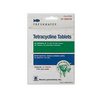 The drug is indicated for the treatment: infectious diseases caused by susceptible pathogens: pneumonia and respiratory infections caused by Mycoplasma pneumoniae; respiratory tract infections caused by Haemophilus influenzae and Klebsiella spp .; bacterial infections of the urino-genital organs, skin and soft tissue infections, ulcerative necrotic gingivostomatitis, actinomycosis, intestinal amoebiasis, anthrax, brucellosis, bartonella, chancroid, cholera, chlamydia, uncomplicated gonorrhea, inguinal granuloma, venereal lymphogranuloma, listeriosis, plague, psittacosis, vesicular rickettsiosis, spotted fever in the Rocky Mountains, typhus, typhoid fever, syphilis, tularemia, yaws.
The drug is indicated for the treatment: infectious diseases caused by susceptible pathogens: pneumonia and respiratory infections caused by Mycoplasma pneumoniae; respiratory tract infections caused by Haemophilus influenzae and Klebsiella spp .; bacterial infections of the urino-genital organs, skin and soft tissue infections, ulcerative necrotic gingivostomatitis, actinomycosis, intestinal amoebiasis, anthrax, brucellosis, bartonella, chancroid, cholera, chlamydia, uncomplicated gonorrhea, inguinal granuloma, venereal lymphogranuloma, listeriosis, plague, psittacosis, vesicular rickettsiosis, spotted fever in the Rocky Mountains, typhus, typhoid fever, syphilis, tularemia, yaws.
Flagyl ER
Active Ingredient: Metronidazole
 Metronidazole is an antibiotic. It fights bacteria in your body.
Metronidazole is used to treat bacterial infections of the vagina, stomach, skin, joints, and respiratory tract. This medication will not treat a vaginal yeast infection.
Metronidazole may also be used for purposes not listed in this medication guide. More About Metronidazole >
Metronidazole is an antibiotic. It fights bacteria in your body.
Metronidazole is used to treat bacterial infections of the vagina, stomach, skin, joints, and respiratory tract. This medication will not treat a vaginal yeast infection.
Metronidazole may also be used for purposes not listed in this medication guide. More About Metronidazole >
Ampicillin
Active Ingredient: acillin
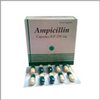 Indications for use of the drug Ampicillin:
Bacterial infections caused by sensitive pathogens: respiratory tract and ENT organs (sinusitis, tonsillitis, pharyngitis, otitis media, bronchitis, pneumonia, lung abscess), infections of the kidneys and urinary tract (pyelonephritis, pyelitis, cystitis, urethritis), gonorrhea, biliary infection system (cholangitis, cholecystitis), chlamydial infections in pregnant women (with erythromycin intolerance), cervicitis, skin and soft tissue infections: erysipelas, impetigo, secondarily infected dermatoses; infections of the musculoskeletal system; pasteurellosis, listeriosis, gastrointestinal infections (typhoid and paratyphoid, dysentery, salmonellosis, salmonella), abdominal infections (peritonitis), endocarditis (prevention and treatment), meningitis, sepsis.
Indications for use of the drug Ampicillin:
Bacterial infections caused by sensitive pathogens: respiratory tract and ENT organs (sinusitis, tonsillitis, pharyngitis, otitis media, bronchitis, pneumonia, lung abscess), infections of the kidneys and urinary tract (pyelonephritis, pyelitis, cystitis, urethritis), gonorrhea, biliary infection system (cholangitis, cholecystitis), chlamydial infections in pregnant women (with erythromycin intolerance), cervicitis, skin and soft tissue infections: erysipelas, impetigo, secondarily infected dermatoses; infections of the musculoskeletal system; pasteurellosis, listeriosis, gastrointestinal infections (typhoid and paratyphoid, dysentery, salmonellosis, salmonella), abdominal infections (peritonitis), endocarditis (prevention and treatment), meningitis, sepsis.
Erythromycin
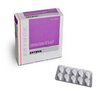 Indications for the use of Erythromycin. Bacterial infections: diphtheria, whooping cough, trachoma, brucellosis, legionnaires, tonsillitis, scarlet fever, otitis, sinusitis, cholecystitis, pneumonia, gonorrhea, syphilis, etc. - caused by drug-susceptible pathogens.
Indications for the use of Erythromycin. Bacterial infections: diphtheria, whooping cough, trachoma, brucellosis, legionnaires, tonsillitis, scarlet fever, otitis, sinusitis, cholecystitis, pneumonia, gonorrhea, syphilis, etc. - caused by drug-susceptible pathogens.
Erythromycin is a reserve antibiotic for the treatment of bacterial infections caused by pathogens, resistant to penicillin, tetracyclines, levomycetin, streptomycin.
Stromectol
Active Ingredient: Ivermectin
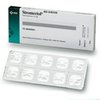 Stromectol is used for treating infections caused by certain parasites. Ivermectin is prescribed for the control of the following diseases:
Stromectol is used for treating infections caused by certain parasites. Ivermectin is prescribed for the control of the following diseases:
- demodecosis - skin lesion with demodex mites. The favorite place is the hairline;
- scabies - an infectious skin disease, caused by an itch mite;
- pediculosis - head louse;
- miase - a skin disease caused by the penetration of fly larvae into the human body;
- onchocerciasis - subcutaneous node, the cause of which is helminth-filariasis;
- strongyloidiasis - infection with roundworms, mainly people who have contact with the soil are sick. The digestive tract is affected. Symptom of the disease is a skin rash.
- trichocephalus - helminths (nematodes), affecting the gastrointestinal tract;
- Ascaridosis - parasites that damage the intestines, respiratory organs, gastrointestinal tract;
- Enterobiosis - "disease of dirty hands" - infection with pinworms (small worms). The intestine is affected.
Cephalexin
Active Ingredient: cephalexin
 Cephalexin is used for infectious diseases of various locations caused by microorganisms sensitive to it: with diseases of the genitourinary system (acute and chronic pyelonephritis, cystitis, prostatitis, endometritis, vulvovaginitis, etc.); infections of the upper and lower respiratory tract (bronchitis, acute pneumonia and exacerbation of chronic bronchopneumonia); infections of the ENT organs (angina, acute otitis media, sinusitis, etc.); suppurative infections of the skin and soft tissues (furunculosis, abscesses, pyoderma, etc.); lymphadenitis, lymphangitis; at acute and chronic (at the stage of exacerbation) osteomyelitis for aftercare after parenteral administration of other antibiotics.
Cephalexin is used for infectious diseases of various locations caused by microorganisms sensitive to it: with diseases of the genitourinary system (acute and chronic pyelonephritis, cystitis, prostatitis, endometritis, vulvovaginitis, etc.); infections of the upper and lower respiratory tract (bronchitis, acute pneumonia and exacerbation of chronic bronchopneumonia); infections of the ENT organs (angina, acute otitis media, sinusitis, etc.); suppurative infections of the skin and soft tissues (furunculosis, abscesses, pyoderma, etc.); lymphadenitis, lymphangitis; at acute and chronic (at the stage of exacerbation) osteomyelitis for aftercare after parenteral administration of other antibiotics.
Above we listed the main and most common antibiotics. There is a whole range of antibacterial drugs that we have not indicated here. You can learn more about these drugs on the official online pharmacy website.
The following is a more scientific information about the antibacterial preparations, their properties and classification
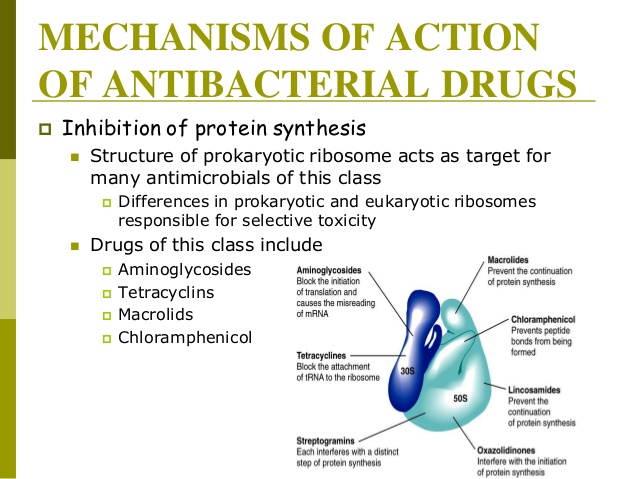
1. Beta-lactam antibiotics
1) Penicillin:
a) Natural (active against streptococcal infections, except Str.pneumoniae, Str.faecalis): benzylpenicillin; dentists; benzathine benzylpenicillin (bicillin 1); benzathine benzylpenicillin + benzylpenicillin potassium salt + procaine benzylpenicillin (bicillin 3); benzathine benzylpenicillin + benzylpenicillin procaine (bi-tsillin-5);
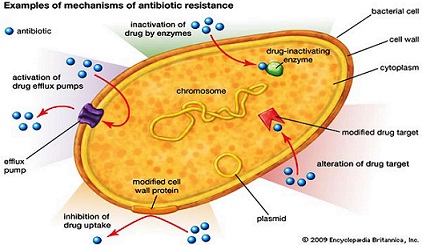
b) semi-synthetic (destroyed β-lactamases, high activity in combination with β-lactamase inhibitors, the lack of effect in the transformation of penicillin binding proteins) izoxazoline group (oxacillin, cloxacillin, flucloxacillin); aminopenicillins (ampicillin, amoxicillin); carboxypenicillins (carbenicillin, ticarcillin, karphecillin, karindacillin); ureidopenicillin (azlocillin, mezlocillin, piperacillin); Combined penicillins (ampicillin / oxacillin, ampicillin / cloxacillin, amoxicillin / cloxacillin);
c) ingibitor-saved (ampicillin / sulbactam, unazin, amoxicillin / clavulanate, ticarcillin / clavulanate, piperacillin / tazobactam).
2) Cephalosporins:
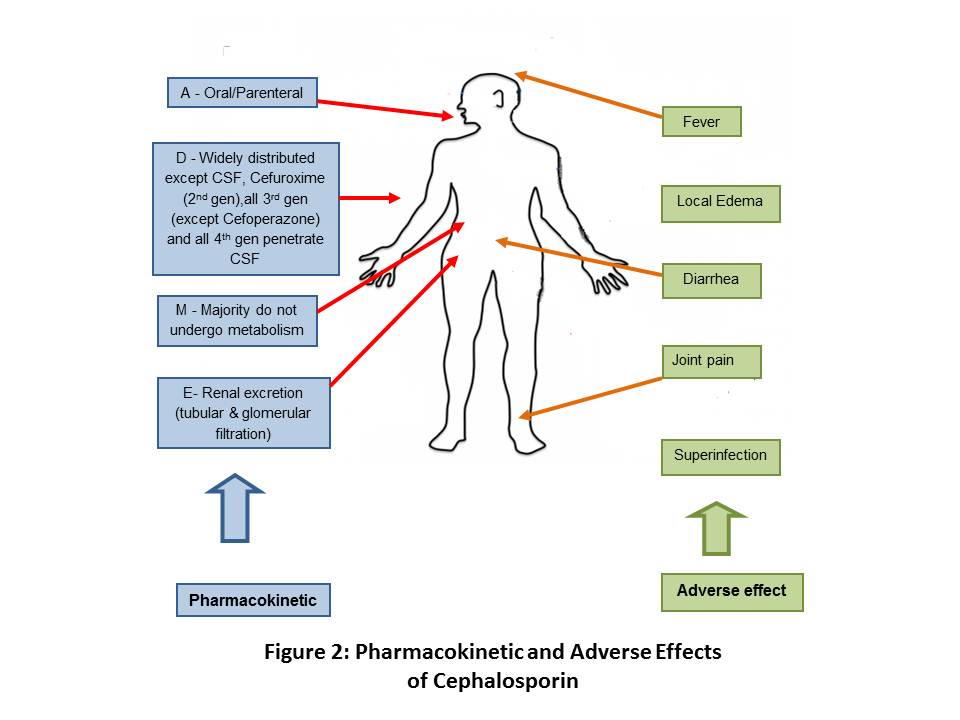
1st generation (reduced activity against Gram-negative organisms): cephadroxil, cephazalur, cephazedon, cephazolin, cephalexin, cephalothin, cephapetril, cephapirin, cephprozil, cephradine, cephtezol;
2nd generation (more active against Gram-negative microorganisms inactive against enterobacteria, citrobacter, Serratia, Klebsiella, Proteus vulgaris, Pseudomonas aeruginosa): cephaclor, cephamandole, cephmetazol, cephminox, cefphoxitin, cephonicid, cephotetan, cephotiam, cephoranid, cephroxadin, cephuzonam , cephuroxime, cimacef, cephuroxime axetil;
3rd generation (highly active against most strains of Gram-negative microorganisms, in the last 10 years - the loss of efficiency, which is related to the ability to induce the formation of .beta.-lactamases: loracarbef, moxalactam, cephdinir, cephetamet, cephtazidime (gepacef, cephobid), cephotaxime, cephtazidime, cephtum, cephtriaxone (oframax);
4th generation (balanced antimicrobial spectrum against Gram-positive micro-organisms (meticillin-active staphylococci, streptococci, pneumococci, anaerobes) and Gram-negative bacteria (Enterobacteriaceae, Neisseria, Haemophilus influenzae, Pseudomonas, acinetobacter), are resistant to hydrolysis by .beta.-lactamases): cephepime, cephclidin , cephluprenam, cephozopran, cephpirome, cephquinome.
3) Ingibitor-saved cephalosporins: cephoperazone / sulbactam, cephtazidime / clavulanate.
4) The carbapenem (freely penetrate through the channels of the membrane of the bacterial cell, a specific chemical structure defines drugs increased resistance to plasmid and chromosomal β-lactamases; reduce the release of endotoxin, endotoxemia blocking, reduced sensitivity of P.aeruginosa, natural resistance in Staphylococcus aureus, MRSA, Stenotrophomonas maltophilia): imipenem, meropenem, invanz (ertapenem MSD), baypenem, panipenem, dithiocarbamate carbapenem, L-740, L-345, TO-2727, IN-3482.
5) Monobactams (comparable in range with aminoglycosides against Enterobacteriaceae, Pseudomonas aeruginosa, inactive against anaerobes and Gram-positive bacteria, can be used to treat patients with hypersensitivity to β-lactam antibiotics): aztreonam, oximonam, crumonam, pirazmonam, tigemonam.
2. Aminoglycosides (pronounced, irreversible polytoxic (nephrotoxicity, ototoxicity, neuromuscular blockade conductivity) have no activity against anaerobic infections, pneumococcus natural resistance to gentamicin; pronounced immunosuppressive effect):
1st generation: streptomycin, monomycin, kanamycin.
2nd generation: gentamycin, tobramycin, sizomycin, netilmycin.
3rd generation: amikacin (resistant to virtually all β-lactamases, a wide spectrum of activity, least toxic) amicil, dibekacin, isepamycin, daktimycin, arbecacin (lowest polytoxicity, extended spectrum of activity).

3. The quinolones and fluoroquinolones (PC):
1st generation (limited spectrum of activity, mainly gram-negative rods, poor absorption and distribution used in the treatment of uncomplicated urinary tract infections).
Fluorinated quinolones (nalidixic acid, oxolinic acid, pipemidic acid).
2nd generation (pronounced activity against Gram-negative bacteria, enteric bacteria, campylobacter, catarrhalis Moraxella, Legionella, Haemophilus influenzae, meningococcal): ciprofloxacin (cifran), ofloxacin (zanocin), ofloxacin, norfloxacin, levofloxacin, ofloxacin, levofloxacin, enoxacin.
3rd generation (pronounced activity against gram-positive flora, particularly pneumococcus and anaerobic infection of MRSA activity with respect to, mycobacteria, chlamydia): sparfloxacin, moxifloxacin (Avelox), klinfloxacin, gatifloxacin, gemifloxacin.
4th generation (high activity against resistant and multi-resistant infections): tosufloxacin, sitafloxacin, rufloxacin, pazufloxacin, methylpiperazinyl fluoroquinolone GG 55-01.
4. Polymyxin (high toxicity, recently practically used) polymyxin M, polymyxin B sulfate, polymyxin E, colistin sulfate, sodium kolistemetat.
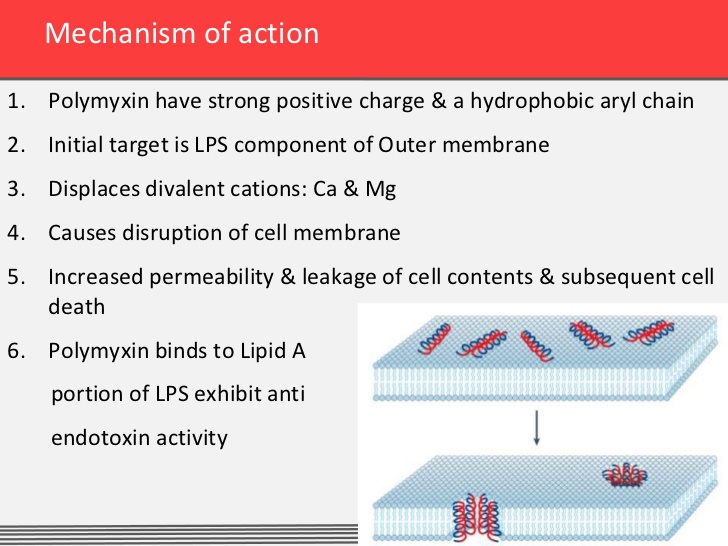
5. Antibacterial macrolides.
Macrolides-azalides - azithromycin azimed (least toxic antibiotic activity against Gram-positive cocci and intracellular pathogens - Chlamydia, mycoplasma, campylobacter, legionella).
Macrolides, ketolides - erythromycin atsistrat, the HMR-3004, the HMR-3647 (high activity against enterococci, including nosocomial, vankomycinresistance mycobacteria strains Bacteroides).
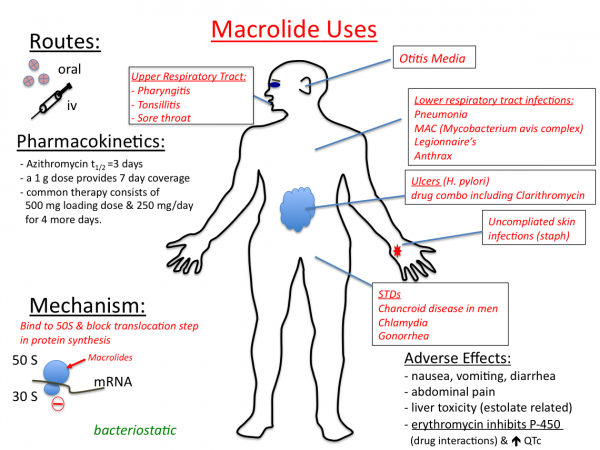
6. 8-oxihinolony (hardly used due to inefficiency in the treatment of urinary tract infections, a narrow spectrum of activity and the development of severe reactions): Nitroxoline.
7. Glycopeptides (drugs of choice for the treatment of enterococcal infections MRSA, resistant to both antibiotics 8-10): vancomycin, teicoplanin.
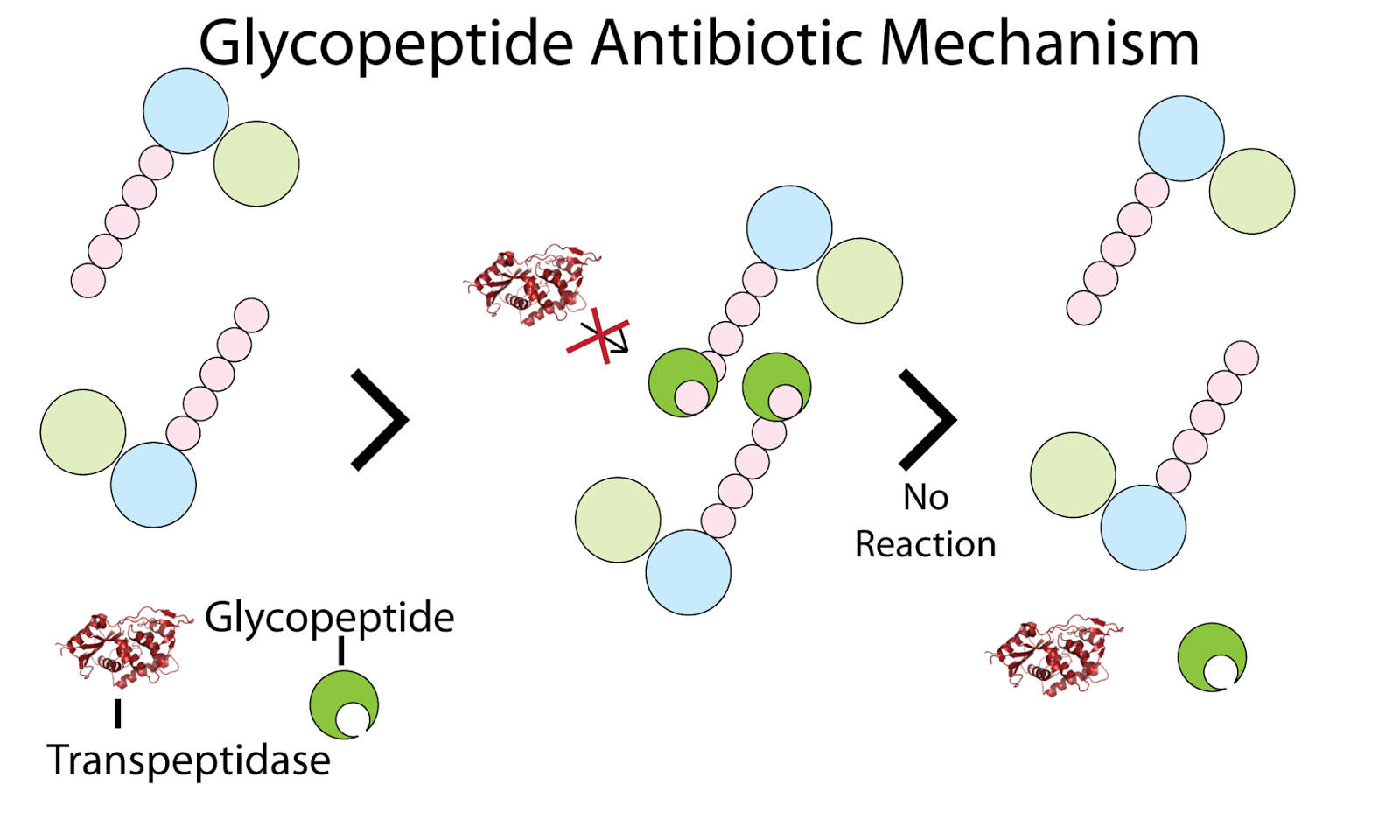
8. Nitroimidazoles (high activity against anaerobic bacterial and protozoal infections) aminitrozol, metronidazole, ornidazole, tinidazole, nimorazol, secnidazole, tenonitrozol.
9. Preparations of different groups: mupirocin, fosfomycin.
II. bacteriostatic drugs
Tetracyclines (broad activity against gram-positive and gram-negative microorganisms, drugs of choice for the treatment of rickettsial diseases, plague, brucellosis, tularemia, typhus, infections with intracellular localization, but use is limited due to the high toxicity and a large number of strains tetracycline-resistance):
- Tetracycline, oxytetracycline, doxycycline (vibramycin) metacyclin, glycylcycline;
- Chloramphenicol (antibiotic of choice in the treatment of typhoid, rickettsial diseases and salmonellosis, high activity against meningococcus, Haemophilus influenzae, Bacteroides), corynebacteria, listeria, bacillus, spore-forming (clostridia) and asporogenous anaerobes; active against the epidermal and Staphylococcus aureus, streptococci (hemolytic, pneumococci and enterococci);
- Chloramphenicol (chloramphenicol).
Macrolides are bacteriostatic (broad-spectrum drugs, have a long half-life may be administered 1-2 times per day, widely used in the treatment and prevention of toxoplasmosis meningitis high activity against chlamydia, and legionella):
1st generation (erythromycin, oleandomycin);
2nd generation (spiromycin, roxithromycin, midecamycin, josamycin, dirithromycin, clarithromycin (clacid) kitasamycin).
Lincosamides (evidence - infections caused by anaerobic microorganisms, particularly disease bryushnoypolosti and pelvis, destructive pneumonia, abscesses, etc.):
- Lincomycin, clindamycin (dalacin C);
- Streptogramins (activity against Enterococcus faecium, MRSA and other gram-positive bacteria);
- Sinertsid.
Oxazolidone (high activity against Enterococcus faecium and faecalis, MRSA, Gram-positive bacteria resistant to glycopeptide pneumococci and streptococci other) linezolid, zyvox (Pfizer).
Nitrofurans (extended spectrum against Gram-positive and Gram-negative pathogens, rare acquired resistance, used for kidney infections, urinary tract, respiratory tract, all abdominal infections): furazolidone, nitrofurazone, furazidin, nitrofurantoin, nitrofurantol, furazidina potassium salt, FURAMAG.
Sulfonamide (limited use due to high toxicity and resistance primarily effective against intestinal infections): sulfathiazole, sulfadimidine, sulfaetidol, urosulfan, sulfadimethoxine, sulfalen, sulfaguanidine, ftalilsulfatiazol, salazopiridazina, trimethoprim, poteseptil, potesetta, co-trimoxazole.
III. TB drugs.
Group I high efficiency: isoniazid, rifampicin.
Group II average efficiency: streptomycin, kanamycin, amikacin, amycil, rifabutin, capreomycin, FH 3rd generation florimycin, cycloserine, ethambutol, ethionamide, protionamid, pyrazinamide.
Group III low efficiency: Pasco, tioatsetazon.
Preparations of different groups: fuzidin-, spectinomycin.
